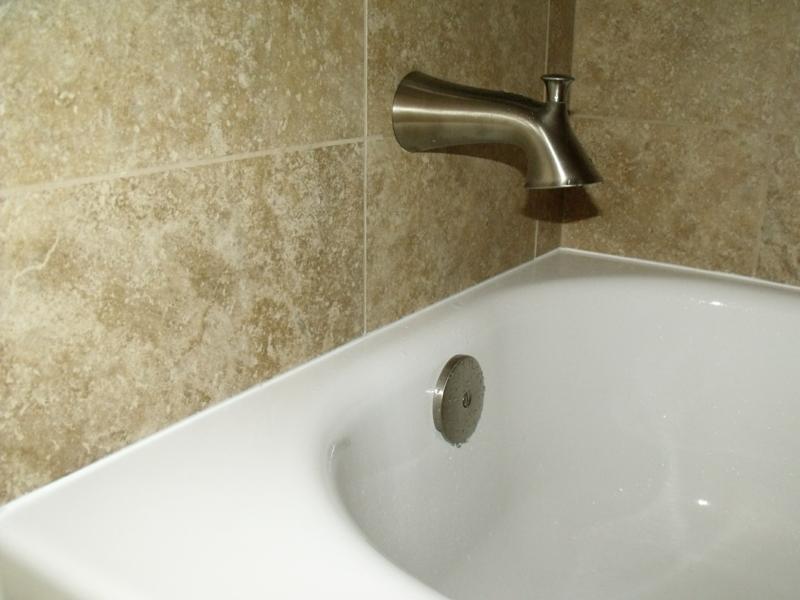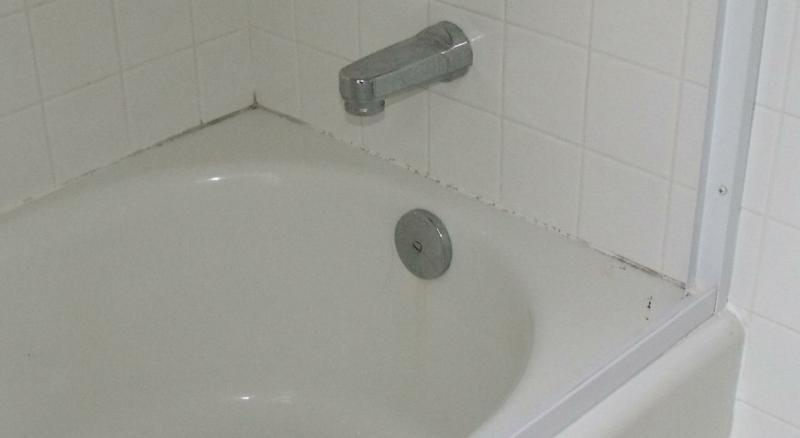This is another blog post by Charles Buell, a Seattle, WA, Home Inspector.
Let’s play “Myth Busters.”
Everyone knows that it is important to keep the connections between tubs and its shower surround well caulked.
I often find these areas recently caulked in an attempt to “spiff things up” for the sale.
Take a look at this first picture. This is brand new construction—-doesn’t it look “SWEEEEET?” Don’t you wish you could lay a bead of caulk like that?

Before you get too envious (you knew this was coming) I am here to tell you that the caulk should not be there.
As commonplace as it may be—-as seemingly logical as it may be—-it is still wrong in many cases. Caulking this connection is fine if the wall is some sort of one piece sheet or enclosure, but with tile it should not be there. The grout joints are designed to prevent water from penetrating the wall but any small amount that does penetrate is able to evaporate out and/or weep out along the bottom. If the tub/tile connection is caulked the water cannot wick out through the bottom grout joint and moisture builds up and is able to feed the mold that eventually develops. I am sure you have all seen that grey discolored staining of the caulk that you would swear is “behind” the caulk—-where it cannot be cleaned off? And you would be right—it is behind the caulk.

The next thing that happens is that if there is enough water building up behind this area the water runs around the edge of the tub and down the walls behind the tiles “outside” the tub with the common resultant damage to walls and floors outside of the tub. Sometimes this damage is just from water not being corralled into the tub by the shower curtain, but when the same thing happens with a shower door in place, these other factors may be at play.
These conditions also “complicate” the inspector’s moisture meter readings.
So if you have a tile tub enclosure—-keep the grout well repaired—-but don’t caulk the connection and the enclosure will behave itself much better.
Charles Buell
Reuben Saltzman, Structure Tech Home Inspections – Email – Minnesota Home Inspector
